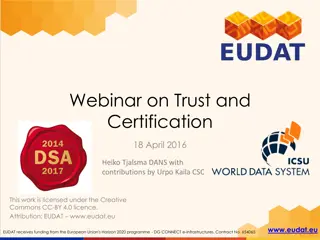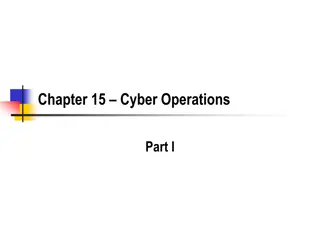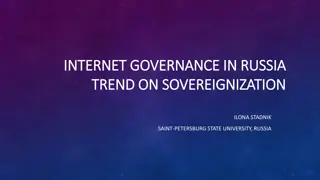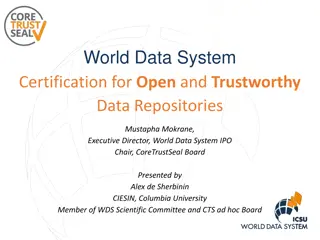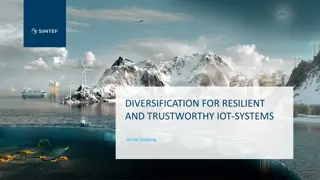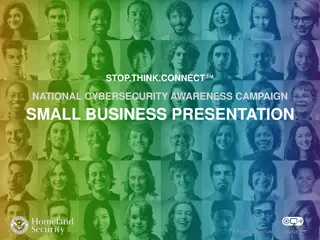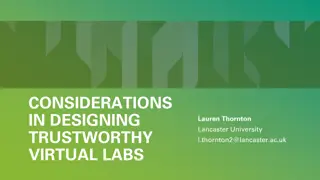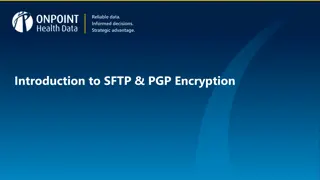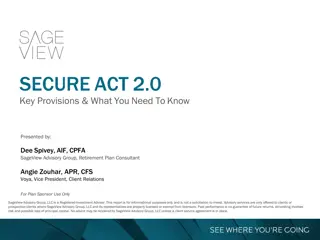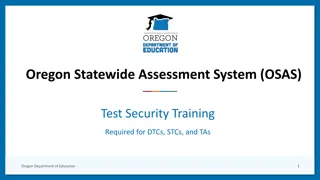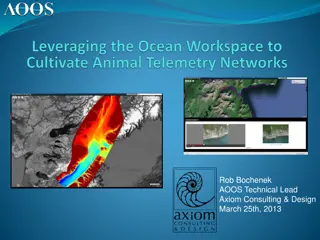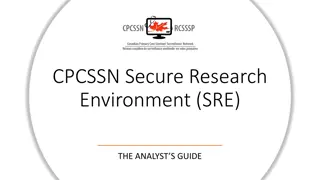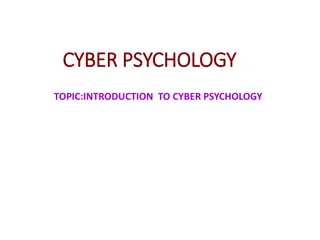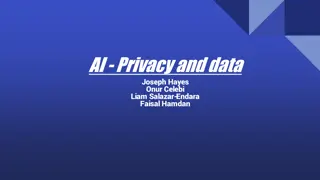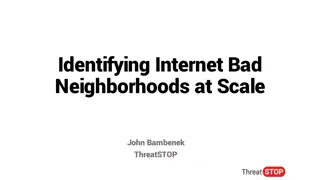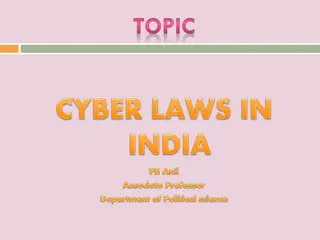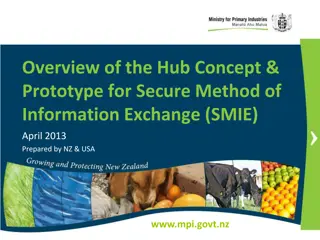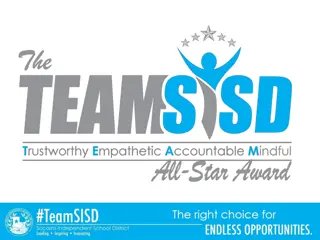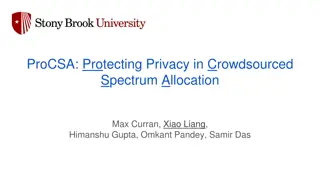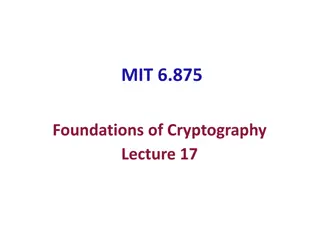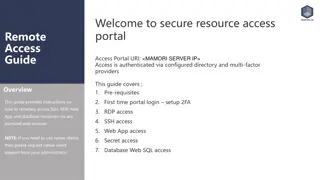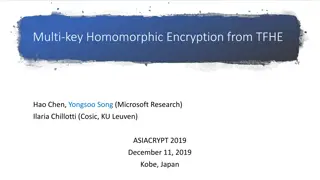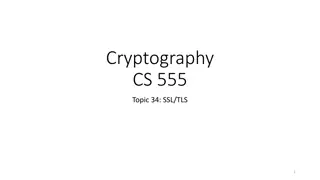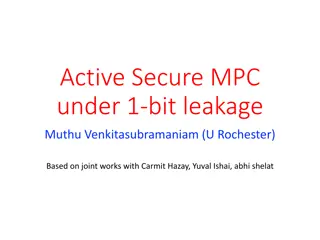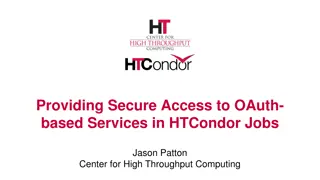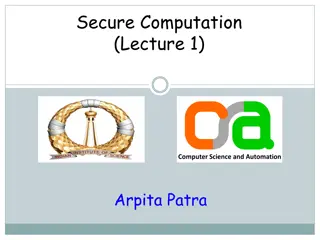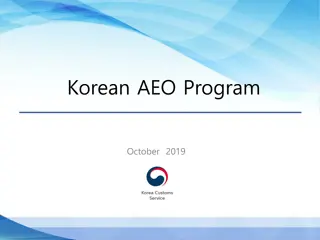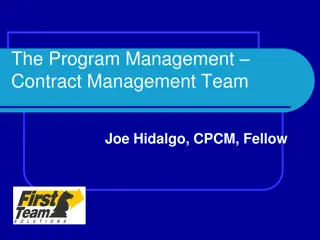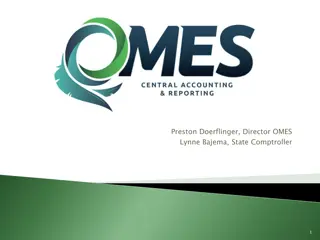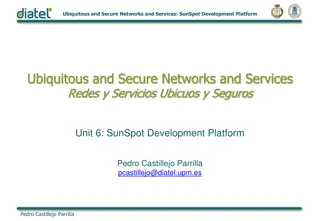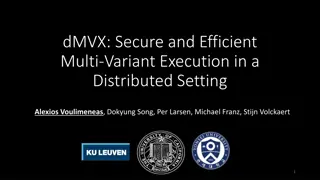Secure and Trustworthy Cyberspace (SaTC) Program Overview
The Secure and Trustworthy Cyberspace (SaTC) Program, led by Program Director Sam Weber, aims to protect cyber systems from malicious behavior while upholding privacy and usability. It focuses on multidisciplinary approaches involving various disciplines like computer science, engineering, economics, mathematics, and behavioral science. The program emphasizes different perspectives including Trustworthy Computing Systems (TC-S), Social, Behavioral & Economic (SBE), and Transition to Practice (TtoP). Each perspective addresses specific aspects of cybersecurity to create a safe and trustworthy cyberspace. Collaboration opportunities are provided through different perspectives, enhancing research and development in cybersecurity.
- Cyberspace Security
- SaTC Program
- Multidisciplinary Approach
- Trustworthy Computing Systems
- Cybersecurity Perspectives
Download Presentation

Please find below an Image/Link to download the presentation.
The content on the website is provided AS IS for your information and personal use only. It may not be sold, licensed, or shared on other websites without obtaining consent from the author. Download presentation by click this link. If you encounter any issues during the download, it is possible that the publisher has removed the file from their server.
E N D
Presentation Transcript
Secure and Trustworthy Cyberspace (SaTC) Program Sam Weber Program Director March 2012
SaTC Goals and Principles To protect cyber-systems (including host machines, the internet and other cyber-infrastructure) from malicious behaviour, while preserving privacy and promoting usability We recognize that cybersecurity is a multi-dimensional problem, involving both the strength of security technologies and variability of human behavior. We need the expertise and resources from a wide range of disciplines: e.g., computer scientists, engineers, economists, mathematicians, behavioural scientists 2
SaTC Perspective Goals Cybersecurity cannot be fully addressed by only technical approaches SaTC emphasizes different approaches and research communities by introducing perspectives Trustworthy Computing Systems (TC-S) Social, Behavioral & Economic (SBE) Transition to Practice (TtoP) Each proposal must address at least one perspective, but need not be multi-disciplinary 3
Trustworthy Computing Systems Perspective Focused on Computer Science topics: Supports designing, building or operating cyber-infrastructure that resists malicious attackers Includes security, privacy and accountability concerns Supports approaches from theoretical to experimental to human- centric Theories, models, algorithms, methods, architectures, languages, tools, systems and evaluation frameworks Studies of tradeoffs among security, privacy, usability Methods to assess, reason about and predict system trustworthiness Methods to increase attacker cost, enable tailored security environments Other perspectives provide collaboration opportunities 4
SBE Perspective The Social, Behavioral and Economic science (SBE) perspective concerns proposals that: Have the potential to promote a safe and trustworthy cyberspace Must contribute to, not merely apply, basic SBE science 5
Transition to Practice (TtoP) Perspective Supports later stage activities in the research and development lifecycle such as prototyping and experimental deployment Emphasis on activities that lead to potential impact on science and education environments NSF cyberinfrastructure Review Criteria Impact on deployed environment Value in terms of needed capability and potential impact across the broad NSF community Feasibility, utility, and interoperability in operation Project plan including goals, milestones, demonstration and evaluation Tangible metrics to evaluate effectiveness of capabilities developed 6
up to $500,000, up to 3 years duration Deadline: Jan 11, 2012 Small up to $1,200,000, up to 4 years duration Deadline: Jan 25, 2012 Medium up to $10,000,000, up to 5 years duration Deadline: Feb 22, 2012 Frontier Limit of 2 proposals per PI per year 7
Frontier Project Goals Up to $10 million/5 year projects Cohesive effort that cannot be funded by collection of smaller awards Long-term vision In-depth or multidisciplinary research investigations 9
Summary To protect cyber-systems (including host machines, the internet and other cyber-infrastructure) from malicious behaviour, while preserving privacy and promoting usability Cybersecurity is a multi-dimensional problem, involving both the strength of security technologies, variability of human behavior, and legal and regulatory frameworks We need the expertise and resources from a wide range of disciplines and backgrounds 10


